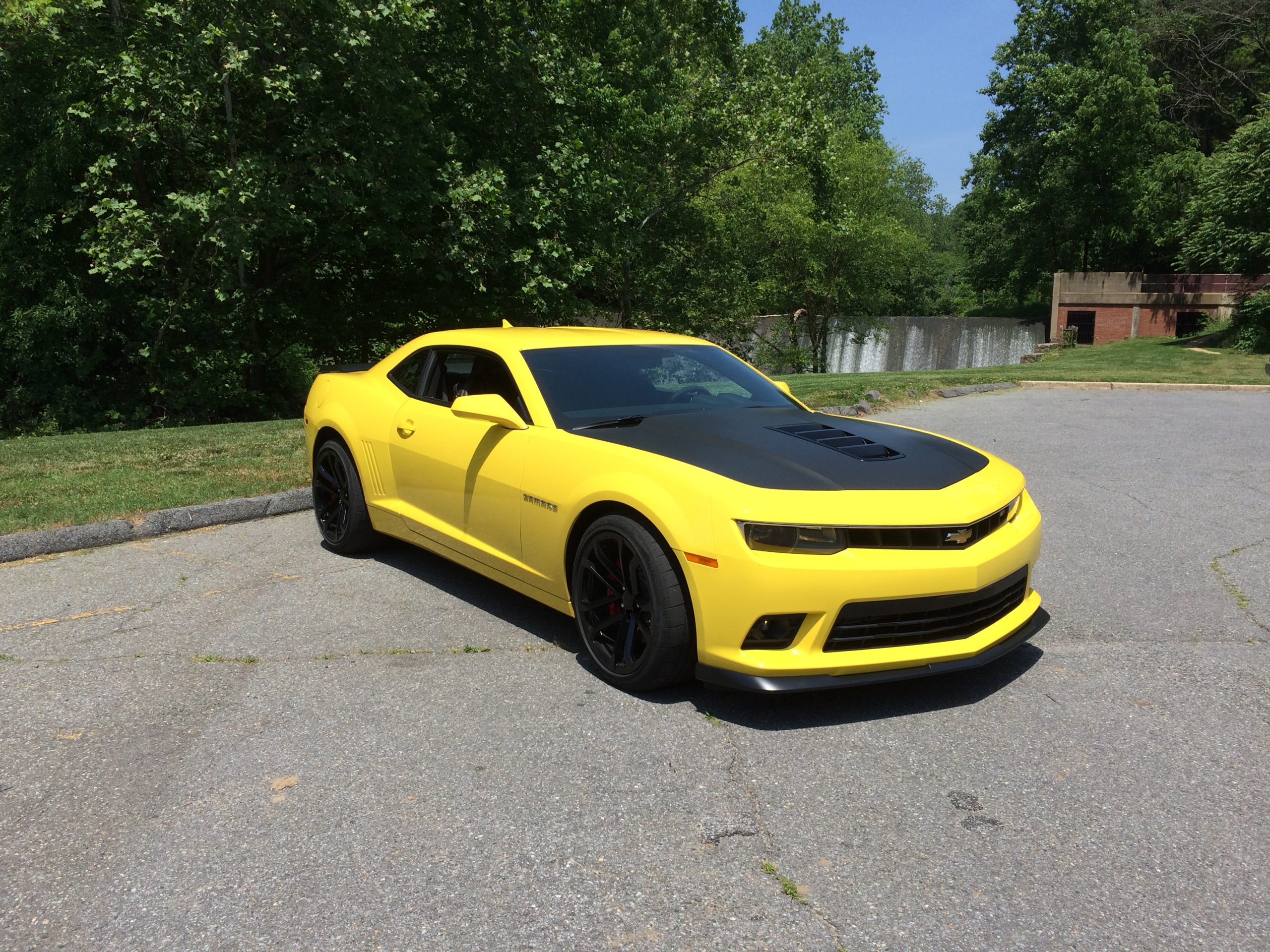In the ever-shifting landscape of the automotive world, survival isn’t guaranteed. Cars come and go, names fade from badges, and entire lineups disappear as quickly as they arrive. Whether a model is discontinued due to sluggish sales, corporate restructuring, changing market demands, or shifting emissions regulations, the result is often the same: the nameplate quietly disappears from showrooms and minds alike. But not all cars die equally.
Some leave behind legacies of underappreciated brilliance, while others vanish with little fanfare, met only with a collective shrug — or in some cases, relief.
This article explores two very different ends of that spectrum. On one side, there are the discontinued cars that were secretly amazing — models that failed to capture public attention during their production runs but have since been rediscovered and reevaluated as genuinely impressive machines.
These are the cars that had potential: vehicles with stellar performance, unique design, or niche appeal that, for one reason or another, simply didn’t sell. Often, these models were victims of poor marketing, bad timing, or economic turbulence rather than flaws in engineering. Years later, enthusiasts and collectors are starting to realize just how special they were.
On the other side are the cars that deserved to die — vehicles that either overstayed their welcome, never should have been built in the first place, or were so fundamentally flawed that their end felt like a mercy.
These models often reflect the darker side of automotive decision-making: corner-cutting for profit, styling experiments gone wrong, or miscalculations of what customers wanted. Whether due to uncompetitive drivetrains, terrible interiors, laughable design, or lackluster reliability, these cars failed to leave a positive mark and were rightfully retired.
What makes this conversation so fascinating is how subjective car culture can be. One person’s hidden gem is another’s daily rental horror story. Some models that flopped when new are now climbing in value on the used market, while others serve as cautionary tales of when automakers let their ambition (or cost-cutting) get the better of them.
The lines are often blurred, but with enough hindsight, patterns emerge. Certain vehicles grow into their reputation, while others vanish into well-deserved obscurity.
This list offers a balanced perspective: five discontinued cars that didn’t get the recognition they deserved, and five whose demise made the car world a better place. We dive deep into what each vehicle was, what went wrong or right, and how its legacy has aged since its disappearance.
Whether you’re a gearhead with encyclopedic knowledge of every 2000s V8 sleeper, or someone who simply remembers driving a Mirage in college and praying it would make it up a hill, there’s something here to appreciate — or criticize.
So buckle up, as we drive through a list that celebrates forgotten brilliance and quietly applauds the departure of some of the auto industry’s biggest missteps. Sometimes, cars die heroes. Other times, they live long enough to become memes.
Also Read: 10 Vehicles With Glove Boxes Big Enough for More Than Paper
Table of Contents
Toggle5 Discontinued Cars That Are Secretly Amazing

1. Pontiac G8 GXP
The Pontiac G8 GXP was GM’s final hurrah for its performance-oriented Pontiac brand before the financial collapse of 2008 spelled its doom. At a time when American automakers were struggling to find a balance between fuel efficiency mandates and their performance legacies, Pontiac dropped a bombshell: a full-size sedan with Corvette power and rear-wheel drive.
Under the hood was the 6.2-liter LS3 V8 straight from the C6 ‘Vette, churning out a healthy 415 horsepower and 415 lb-ft of torque. It could be mated to a six-speed manual transmission — a rarity for a sedan of its size — and had a 0–60 time of just over 4 seconds. It was raw, loud, aggressive, and yet comfortable enough to be a daily driver.
Despite its immense potential, the G8 GXP failed to make the impact it deserved, largely because it was introduced at precisely the wrong time. The 2008 financial crisis devastated the auto industry, and GM’s bankruptcy forced the company to shutter Pontiac altogether in 2009. The G8 GXP barely had two model years to gain traction, and sales were limited.
Marketing was weak, the car was misunderstood, and most dealers didn’t know how to explain that this wasn’t just another Impala clone. What made things worse was how few people got to experience one, meaning that word-of-mouth enthusiasm never got a chance to flourish. It came and went like a comet: bright, brief, and unforgettable for those who witnessed it.
Today, the G8 GXP is a sought-after sleeper sedan among muscle car enthusiasts and collectors who recognize it for what it truly was — a four-door Corvette dressed in business casual. Built in Australia as a Holden Commodore and rebadged for the U.S. market, it blended GM’s V8 lunacy with European ride and handling dynamics.
It had Brembo brakes, magnetic ride control, and a sophisticated chassis. The interior might have lacked refinement, but the GXP was never about chrome finishes or stitched leather — it was about raw mechanical pleasure. It’s a car that’s aged into legend, appreciated now far more than it was when new.
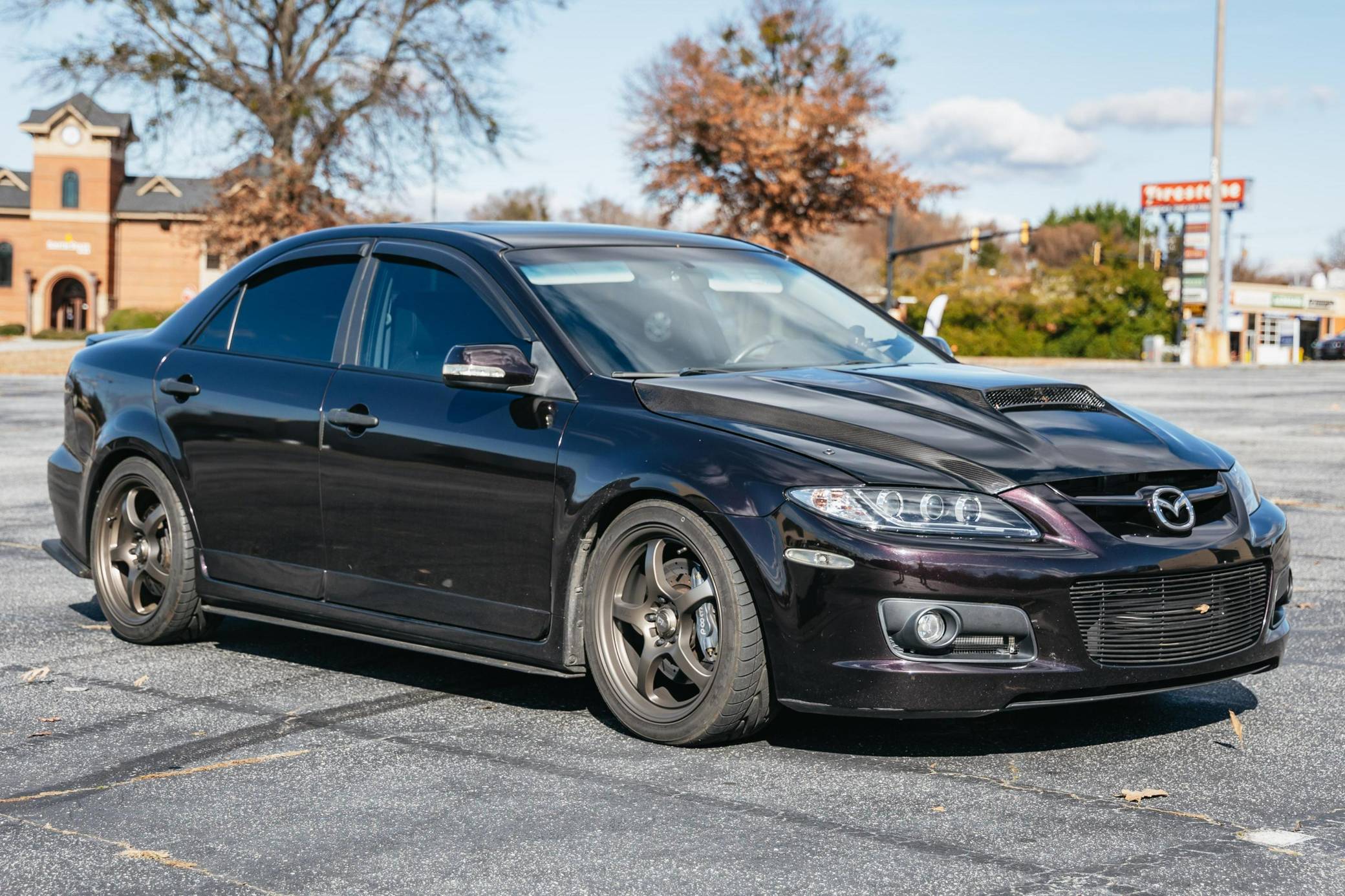
2. Mazda Mazdaspeed6
The Mazdaspeed6 was Mazda’s bold attempt to bring turbocharged, all-wheel-drive excitement to the mid-size sedan segment. Based on the already well-respected Mazda6 platform, the Mazdaspeed version took things to another level with a turbocharged 2.3-liter inline-four that made 274 horsepower and 280 lb-ft of torque.
What made it truly unique, though, was the full-time AWD system and six-speed manual gearbox — both of which gave it characteristics closer to rally-bred legends like the Subaru WRX STI and Mitsubishi Lancer Evolution. But unlike those cars, the Mazdaspeed6 didn’t shout its performance credentials. It was subtle, classy, and unmistakably Japanese in its refinement.
Unfortunately, that understated nature also worked against it. While the Evo and STI were plastered with wings, vents, and flared arches, the Mazdaspeed6 looked like a nicely dressed-up family sedan. Mazda’s marketing at the time didn’t fully capitalize on its potential as a WRX-chasing sleeper, and many potential buyers either never heard of it or didn’t realize what it was capable of.
Reliability issues also cropped up in early models, with turbo seal problems and drivetrain quirks turning off would-be fans. But for the driver who was willing to look past the badge and commit to proper maintenance, the Mazdaspeed6 offered one of the most unique driving experiences of any sedan in its era.
In today’s world, where true performance sedans are disappearing in favor of lukewarm crossovers, the Mazdaspeed6 looks like a revelation in hindsight. It had everything modern enthusiasts long for: a proper manual, a boost-happy engine, and all-wheel-drive grip.
Yet it also had refinement and maturity that made it perfect for daily driving. As the used market continues to rediscover its strengths, prices are climbing — and so is its reputation. It may not have sold in big numbers, but the Mazdaspeed6 was ahead of its time, and it deserves a spot in the canon of modern performance greats.
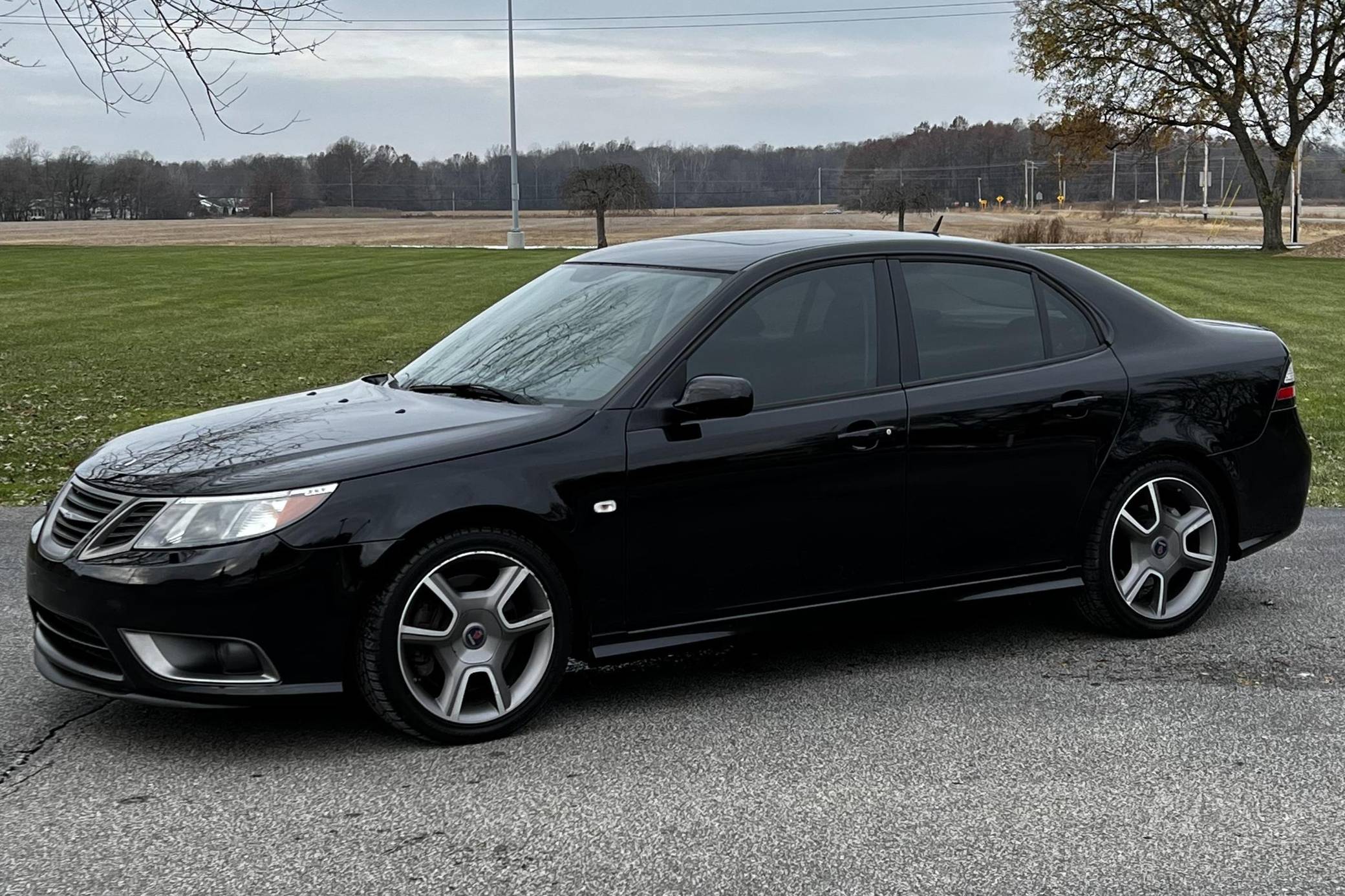
3. Saab 9-3 Turbo X
The Saab 9-3 Turbo X is one of the most underrated sports sedans of the late 2000s. Developed in the final years of Saab’s turbulent life under General Motors, the Turbo X was meant to show the world that Saab could still build a world-class performance car — and it succeeded, even if few people noticed.
Power came from a turbocharged 2.8-liter V6 producing 280 horsepower, mated to a six-speed manual or automatic and Saab’s revolutionary XWD system — one of the first torque-vectoring all-wheel-drive setups on a sedan. It was capable of sending power to the rear wheels during aggressive driving, making it feel more agile and responsive than many of its front-heavy, front-drive competitors.
What really set the Turbo X apart wasn’t just the drivetrain, but its character. Saab had always done things differently, and the Turbo X proudly leaned into that eccentricity. From its all-black paint to its airplane-inspired dashboard layout, it oozed Scandinavian cool.
The suspension was firm but not punishing, the steering was sharp, and the power delivery was smooth and refined. It was fast, especially in the wagon (SportCombi) form, where it could easily haul the family while embarrassing unsuspecting German sports sedans. Yet it retained that distinctly Saab balance of utility, individuality, and clever engineering. This was a car that knew its identity — and owned it.
The tragedy of the Turbo X lies in timing. It launched in 2008, right as Saab was on the verge of collapse. GM’s mismanagement and the global recession strangled its production before it had a chance to shine. Fewer than 1,000 units made it to the U.S., making it an incredibly rare find today.
But for those who get their hands on one, it’s a deeply rewarding ownership experience. The Turbo X was a glimpse of what Saab could have been in a different world — a brand that bridged quirk and performance with a style all its own.
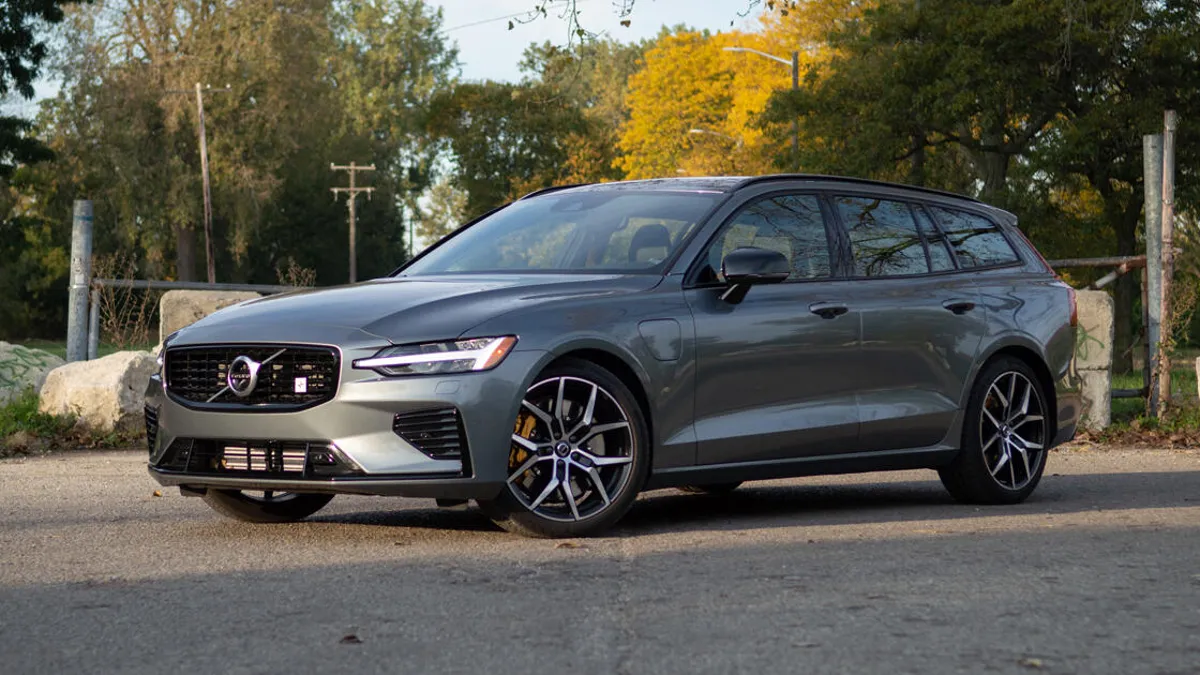
4. Volvo V60 Polestar
The Volvo V60 Polestar was the product of a short-lived but wildly exciting chapter in Volvo’s history — one where the brand dared to go toe-to-toe with Germany’s performance titans. While Volvo has long been associated with safety and understated luxury, the V60 Polestar injected a heavy dose of adrenaline into the lineup.
Initially equipped with a turbocharged and supercharged inline-six making 345 horsepower, it was later reengineered to use a four-cylinder twin-charged engine with even greater output. But performance wasn’t just about straight-line speed — the V60 Polestar also came equipped with Öhlins suspension, massive Brembo brakes, all-wheel drive, and a chassis tuned for high-speed stability and precision cornering.
What set the V60 Polestar apart was how tastefully it was done. Unlike the aggressive, in-your-face styling of its rivals, the Polestar was clean, sleek, and distinctly Scandinavian in its aesthetic. It wore its performance modestly — a splash of “Rebel Blue” paint, subtly flared arches, and minimalist badging were all that hinted at the beast within.
Inside, it was equally reserved: deeply bolstered seats, unique stitching, and just enough carbon trim to remind you this wasn’t your standard Volvo wagon. This was a performance car for grown-ups — no fake exhaust noise, no obnoxious spoilers, just pure, focused engineering.
Despite its impressive performance — 0–60 in under 5 seconds and impeccable handling — the V60 Polestar remained a niche product. Only a few thousand were made globally, and it was discontinued as Volvo pivoted toward electrification and efficiency.
But among enthusiasts, it’s recognized as one of the finest fast wagons ever made. It combined utility, sophistication, and raw capability in a way few vehicles have since. In a world of ever-blander crossovers, the V60 Polestar is a reminder of what can happen when a brand known for safety decides to have a little fun — and does it with remarkable restraint.
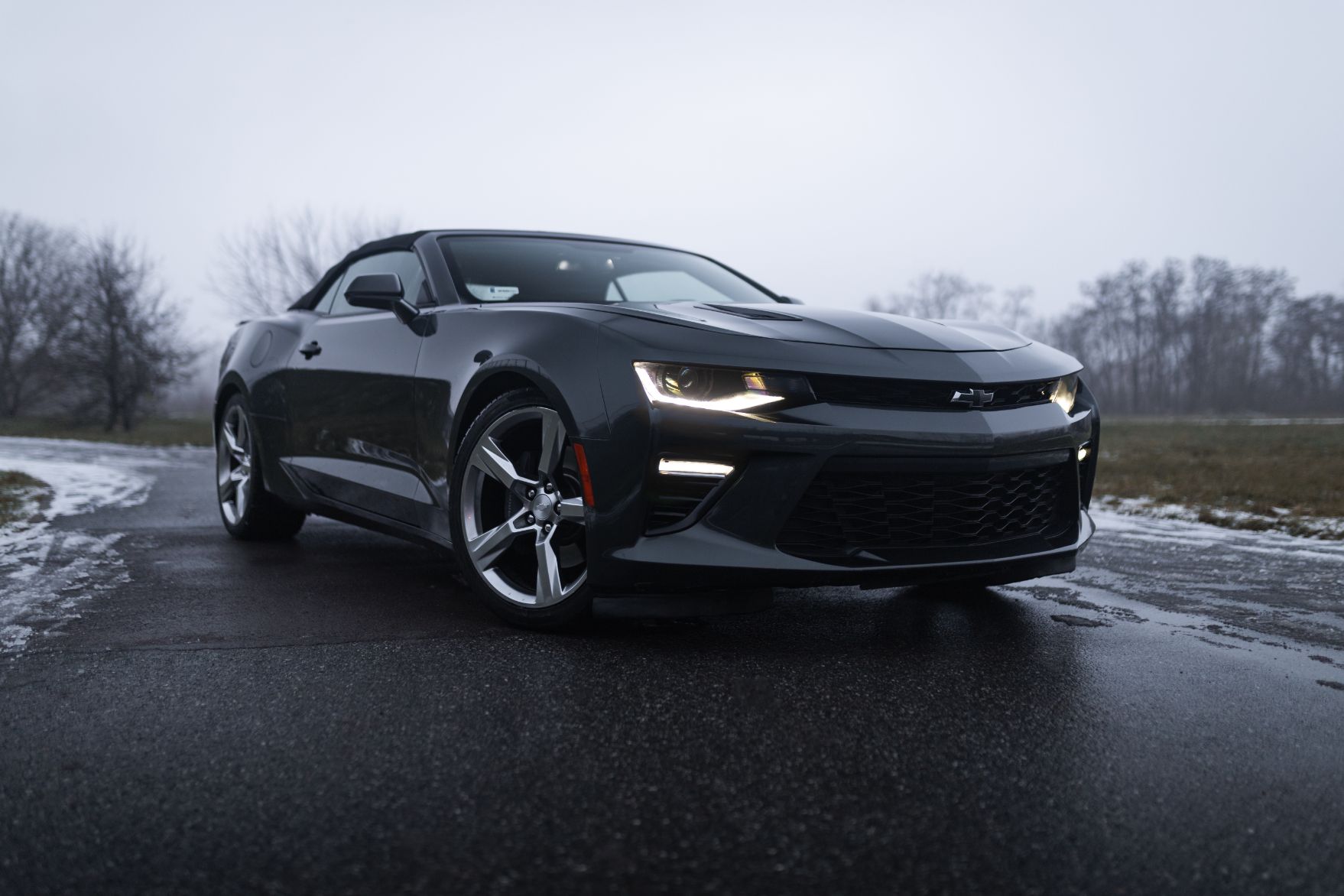
5. Chevrolet SS
The Chevrolet SS was one of GM’s most misunderstood and underappreciated performance cars — a full-size, rear-wheel-drive sedan with a 6.2-liter LS3 V8, available with a six-speed manual transmission, and performance numbers that rivaled the BMW M5.
It was, in essence, a rebadged Holden Commodore from Australia, brought to the U.S. as a spiritual successor to the Pontiac G8. And like its Pontiac cousin, it offered old-school muscle wrapped in a modern, practical package. With 415 horsepower, magnetic ride control, and a 0–60 time in the low 4-second range, the SS was a true sleeper that could shame much more expensive machinery.
The reason most people overlooked it? Bland styling and virtually zero marketing. The Chevrolet SS looked like an Impala to the untrained eye, and Chevy made almost no effort to distinguish it visually. This wasn’t a car that screamed for attention — it had no wild body kit, no monstrous wing, and no loud exhaust note unless you pushed it.
It was the kind of vehicle you’d see in a parking lot and walk right past — unless you knew what you were looking at. And for those who did know, it was a performance goldmine. It had all the right ingredients: powerful V8, rear-wheel drive, exceptional brakes, and one of the last great naturally aspirated engines in a full-size sedan.
What made the SS even more impressive was how well it performed across the board. It wasn’t just fast — it was balanced, poised, and capable of serious track duty right out of the box. The ride was supple, the interior surprisingly refined, and the optional manual transmission added a level of driver engagement that no other American sedan at the time could match.
Sadly, low sales (fewer than 13,000 units sold over four years) and the closure of Holden’s Australian manufacturing sealed its fate. But for those who were lucky enough to snag one, the SS has become a modern classic — a rare blend of American power and Aussie finesse.
5 Cars That Deserved to Die
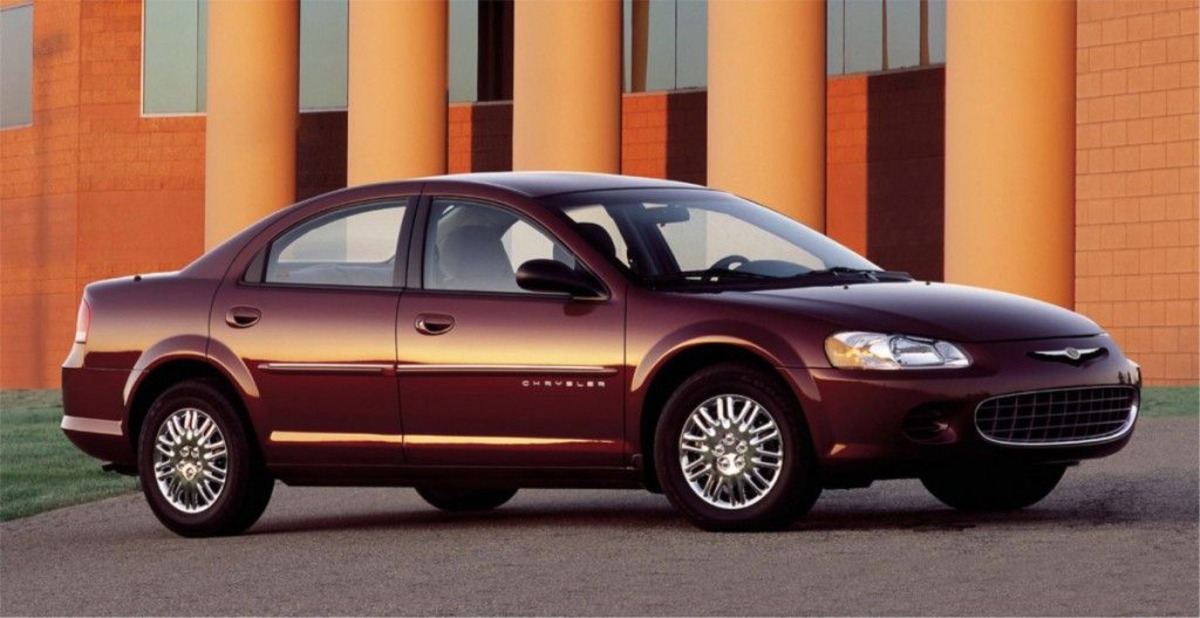
1. Chrysler Sebring
The Chrysler Sebring was intended to be Chrysler’s stylish, affordable mid-size offering, available as both a sedan and a convertible. What it ended up being, however, was a rolling compilation of poor design, underwhelming performance, and interior materials so cheap they made rental fleets weep.
While it did sell in decent numbers due to heavy discounts and fleet sales, the Sebring never managed to inspire loyalty or enthusiasm among actual drivers. Its engines — particularly the base 2.4-liter four-cylinder and underwhelming V6 options — were coarse, unrefined, and painfully slow compared to its Japanese and Korean competitors. The chassis was dull, the handling was sloppy, and the transmission tuning made it feel like the car was actively trying to avoid acceleration.
Perhaps worse than the way it drove was the way it was built. The Sebring’s interior was a mishmash of brittle plastics, an uninspired layout, and panel gaps you could fit a quarter through. Touch points like the steering wheel and gear selector felt cheap, and the infotainment systems (if equipped) aged poorly.
The convertible model, which should have been a bright spot, was plagued with reliability issues, leaking tops, and a cramped, noisy interior that made it less enjoyable than riding in a go-kart during a thunderstorm. By the end of its run, the Sebring was being bought primarily by budget-conscious rental fleets, not private buyers, which only further hurt its public image.
The writing was on the wall for the Sebring long before its 2010 discontinuation. It had become a byword for mediocrity and corner-cutting. Chrysler eventually replaced it with the far superior 200 — a model that, while not perfect, at least acknowledged the Sebring’s failings and attempted to correct them.
Looking back, the Sebring was a car that never truly competed with its peers in terms of refinement, engineering, or appeal. Its death was not only expected — it was necessary.
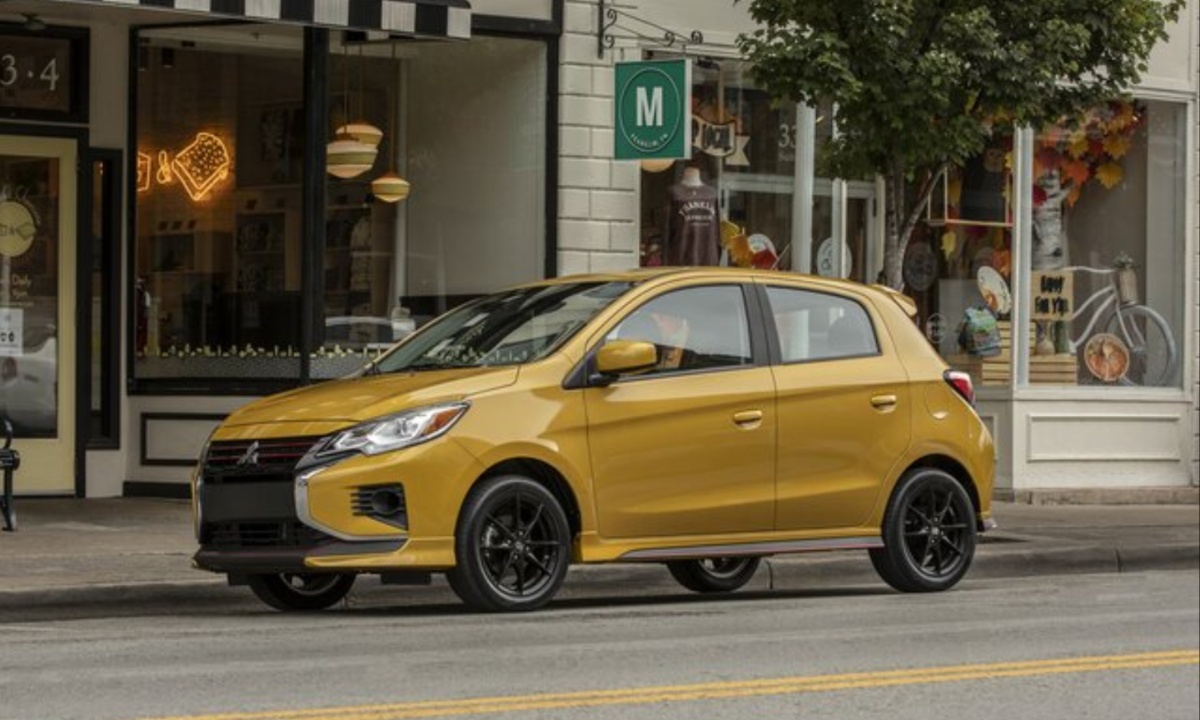
2. Mitsubishi Mirage
The Mitsubishi Mirage was marketed as one of the most affordable new cars on the market, and while it technically fulfilled that promise, it did so at the expense of nearly everything that makes a car enjoyable or even acceptable to drive. Under the hood was a wheezing three-cylinder engine that produced a meager 74 horsepower.
While that might be forgivable in an ultra-lightweight vehicle built strictly for city duty, the Mirage’s sluggish acceleration and droning CVT made highway merging feel like a dangerous gamble. Its zero-to-sixty time hovered somewhere in the 12-second range, which in the 2010s was simply unacceptable for anything beyond a golf cart.
The interior felt every bit as cheap as its price tag suggested. Hard plastics covered every surface, the seats offered little to no support, and sound insulation was seemingly nonexistent. Road and wind noise poured into the cabin, making even short drives feel like endurance tests.
While other budget cars like the Honda Fit or Kia Rio offered surprising levels of refinement and practicality for the money, the Mirage offered only the bare minimum. Even its fuel economy — its supposed selling point — was rivaled or surpassed by hybrids and more modern compacts that also delivered far superior driving experiences.
In the end, the Mirage wasn’t just cheap — it was cheaply made. It exemplified a corner of the automotive market that catered to absolute bottom-barrel pricing with no regard for driving dynamics, comfort, or even long-term ownership value.
Mitsubishi’s reputation in the U.S. market has struggled for years, and vehicles like the Mirage only worsened its standing. Its eventual discontinuation wasn’t just welcome — it was overdue. The automotive world had moved on, and the Mirage remained a relic of an era best forgotten.
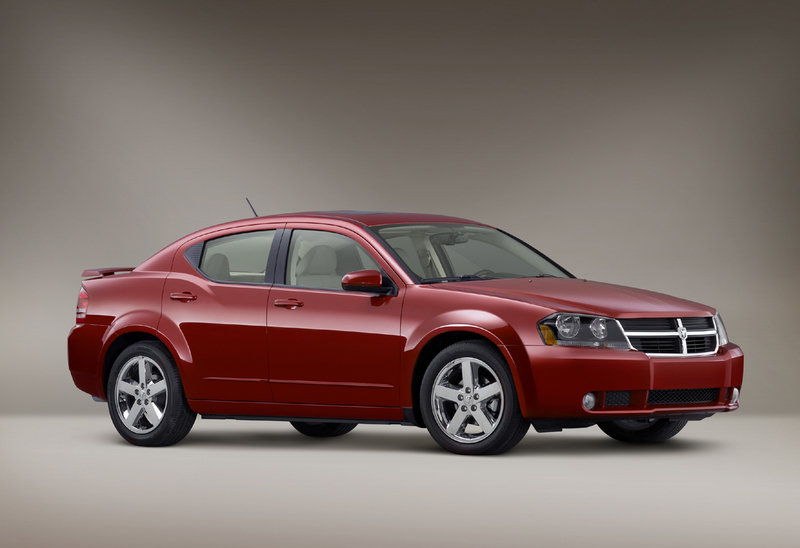
3. Dodge Avenger
The Dodge Avenger was meant to be a sportier, smaller sibling to the Dodge Charger — something that would appeal to young buyers looking for muscle car attitude in a mid-size sedan. Unfortunately, what they got was a hastily assembled and poorly engineered car that only looked aggressive on the outside. Underneath the bold front fascia and chunky styling was a dull, lethargic vehicle built on the outdated Chrysler JS platform.
Base models came with underpowered four-cylinder engines and sluggish automatics, while even the available V6 did little to enhance performance. The driving experience was vague, uninspired, and noisy, making the Avenger feel more like an appliance than a muscle-inspired sedan.
Interior quality was another sore point. Dodge opted for hard plastics, flimsy buttons, and uninspired materials throughout the cabin. The design lacked cohesion, and the ergonomics were frustrating at best. Even when Dodge tried to update the interior during the mid-cycle refresh, it still fell far short of what buyers expected from competitors like the Ford Fusion, Honda Accord, or Hyundai Sonata.
Rear seat space was average, trunk space was decent, but everything about the Avenger screamed “rental lot special” rather than “driver’s choice.”
While Dodge did attempt to revive the model with the “R/T” trim and slightly improved powertrains, it was too little, too late. The Avenger had already cemented its reputation as a car that looked tough but drove like oatmeal. By the time it was discontinued in 2014, few mourned its passing.
The Charger and Challenger have thrived partly because Dodge was able to concentrate on making those models better without the Avenger dragging the brand down. It was a car with an identity crisis, trying to be aggressive without actually delivering any excitement.
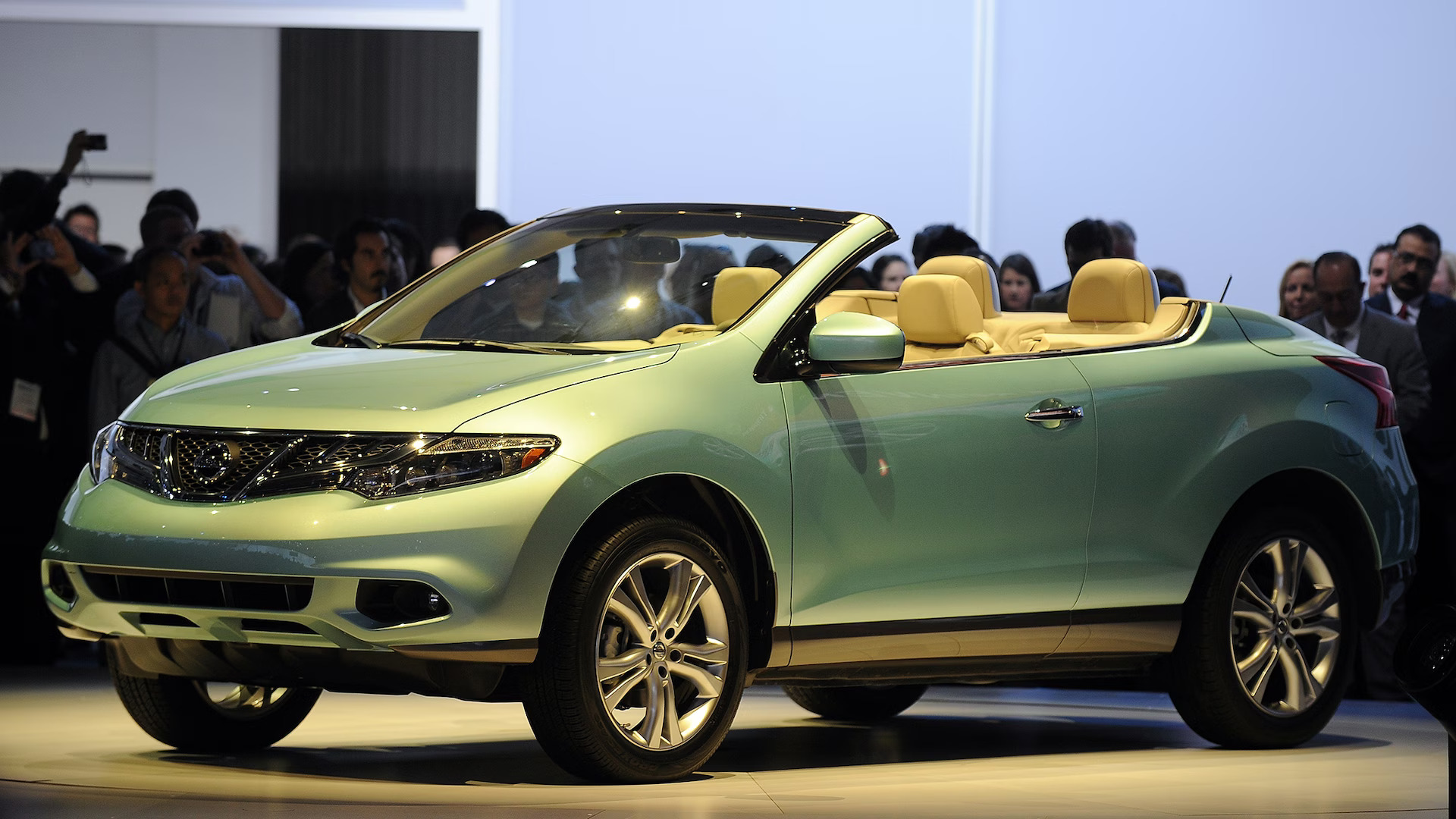
4. Nissan Murano CrossCabriolet
The Nissan Murano CrossCabriolet was a bold experiment in combining the crossover SUV with a convertible, and the results were as awkward as you might imagine. Based on the second-generation Murano, the CrossCabriolet cuts off the roof and rear doors to create a two-door, four-seat convertible with SUV proportions.
On paper, it was supposed to offer the high seating position of an SUV with the open-air joy of a convertible. In reality, it ended up being a strange-looking, overpriced, and deeply compromised vehicle that appealed to no one in particular.
The biggest issue was design. With the top up, the CrossCabriolet looked bulky, misshapen, and oddly proportioned. With the top down, it still looked weird, as though someone had Photoshopped two different cars together. Rear visibility was terrible, the massive doors were cumbersome, and the chassis flexed noticeably over bumps, compromising structural integrity.
To make matters worse, it wasn’t particularly sporty or luxurious. It used the standard Murano’s V6 and CVT setup, which felt sluggish and completely unsuited to a car that was supposedly built for fun. Meanwhile, it was priced in the $40,000 range — firmly in luxury territory — without delivering anything close to a luxury experience.
The CrossCabriolet was a sales flop from day one. It became the punchline of automotive jokes and is frequently cited as one of the worst vehicle ideas of the 2010s. Nissan hoped it would create a new niche in the market, but instead, it highlighted just how far automakers could go in the name of novelty. Its discontinuation was a mercy killing. There was no real demand, no fan base, and no legacy. It was a vehicle that never should have made it past the concept stage.
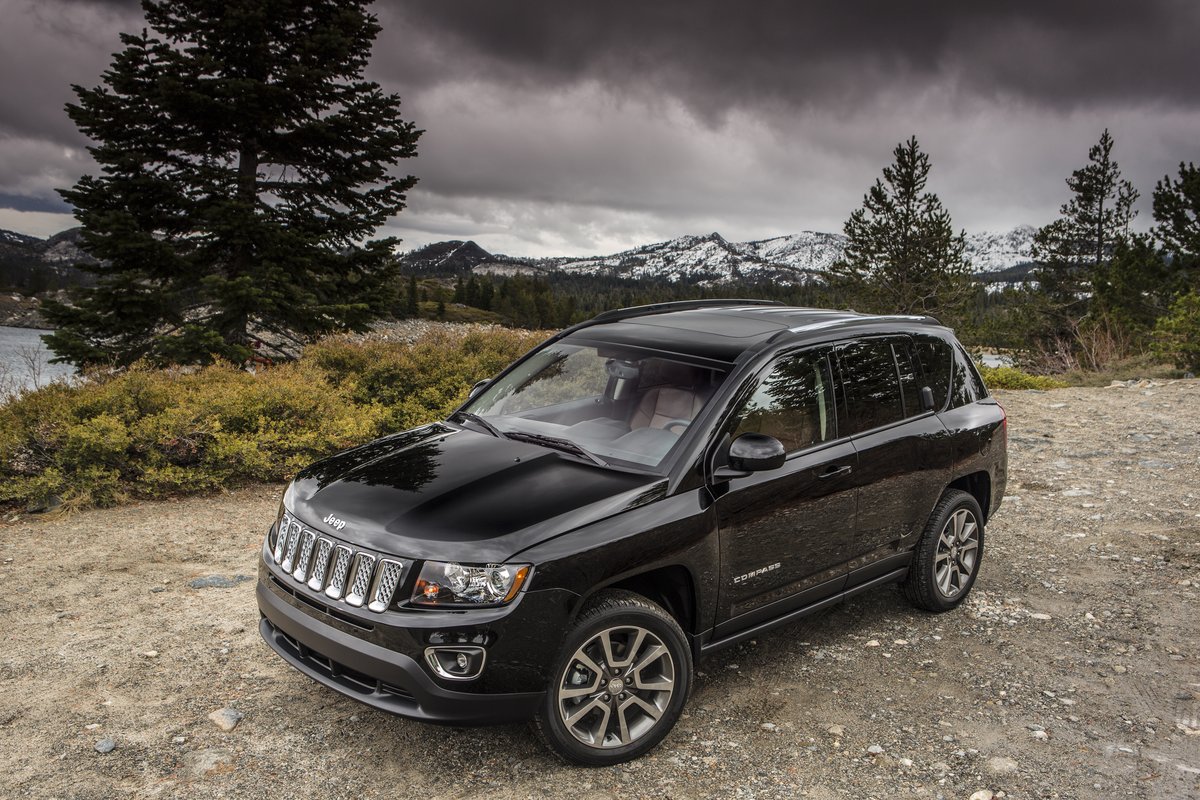
5. Jeep Compass
The first-generation Jeep Compass is often viewed as one of the biggest missteps in Jeep’s history. Introduced during the DaimlerChrysler era, the Compass was supposed to bring Jeep DNA to a more urban-friendly, car-based crossover. The problem was, it didn’t drive well, didn’t look good, and — worst of all — didn’t live up to Jeep’s off-road heritage.
The Compass shared a platform with the Dodge Caliber, and early models came with underwhelming engines, a droning CVT, and a suspension setup that felt floaty and disconnected. For a brand that built its reputation on rugged capability, the Compass felt like a betrayal.
Styling was another sore point. The original Compass design was widely criticized for its awkward proportions, uninspired detailing, and general lack of identity. It didn’t look like a Jeep, didn’t feel like a Jeep, and didn’t offer the capabilities of a Jeep.
The interior was even worse: an abundance of hard plastics, outdated technology, and cheap materials gave it a budget feel that undermined any premium aspirations. Even the optional “Trail Rated” packages were largely cosmetic and did little to boost the Compass’s off-road performance.
Despite all of this, the Compass stuck around for a full decade, largely because of strong fleet sales and brand loyalty. But few enthusiasts ever embraced it, and Jeep itself seemed to realize its mistake by the time the second-generation Compass debuted in 2017 with vastly improved everything.
The original Compass was a vehicle that never should have worn the Jeep badge. Its discontinuation wasn’t just logical — it was essential to preserve the integrity of a brand that stood for toughness and capability. The Compass’s first generation stands as a lesson in how brand dilution can backfire.
Also Read: 8 Cars With Double-Layer Center Consoles for Organized Storage
The automotive world is often unforgiving. A car might have the right engine, the right features, and even the right price — but if the timing is off, if the marketing misses its mark, or if the public simply isn’t ready, it can vanish before it ever gets a fair chance.
That’s the story behind many of the vehicles in the “secretly amazing” category. These were cars that had the bones of greatness: thrilling performance, unique identity, or thoughtful engineering that should have earned them a place among modern classics. But poor execution in secondary areas — or external circumstances like brand collapse or market shifts — led to their untimely end.
Cars like the Pontiac G8 GXP, Chevrolet SS, and Volvo V60 Polestar didn’t fail because they were bad cars. In fact, they were exceptionally good — perhaps too good for the segments they found themselves in. Buyers weren’t prepared for a full-size American sedan with BMW M5 performance, or a Scandinavian wagon that could dance with the best of Germany’s performance elite.
The public didn’t know what to do with a car like the Saab 9-3 Turbo X, even though enthusiasts now see it as a high-water mark for the brand. These vehicles did not from failure, but from being misunderstood or poorly positioned. And now, in hindsight, they’re quietly being canonized by the very audience that ignored them the first time around.
On the other side of the spectrum, we have the cars whose discontinuation was both necessary and expected. Vehicles like the Chrysler Sebring or Dodge Avenger had nothing to offer in terms of innovation or excitement. They were designed to be cheap, sold primarily to rental fleets, and built with little regard for quality or long-term appeal.
Others, like the Nissan Murano CrossCabriolet, represented well-meaning experiments that strayed too far into gimmickry. These weren’t cars that quietly exited the market — they were models whose presence often raised eyebrows and whose departures were met with relief. They diluted their brands, confused their audiences, and in some cases, embarrassed the companies that built them.
It’s easy to dismiss these “bad” cars with mockery, but they also serve an important role in automotive history. They highlight the mistakes that companies learn from. The next-generation Compass was worlds better than its predecessor because Jeep realized what didn’t work.
Chrysler’s eventual revival of the 200 was a direct response to the failure of the Sebring. Even Mitsubishi’s retreat from models like the Mirage might lead to a more focused lineup in the future. Mistakes, while painful, can be necessary steps toward progress.
Ultimately, the life and death of a car model tells us a lot about the times in which it was built. Trends change. Expectations evolve. What the public wants can shift overnight. In that volatile environment, it’s no wonder that some cars slip through the cracks while others are mercifully swept under the rug.
What matters is how we look back on them: not just with criticism or nostalgia, but with clarity. In doing so, we come to understand what makes a car truly great — and what earns it a spot on the scrap heap of history.

